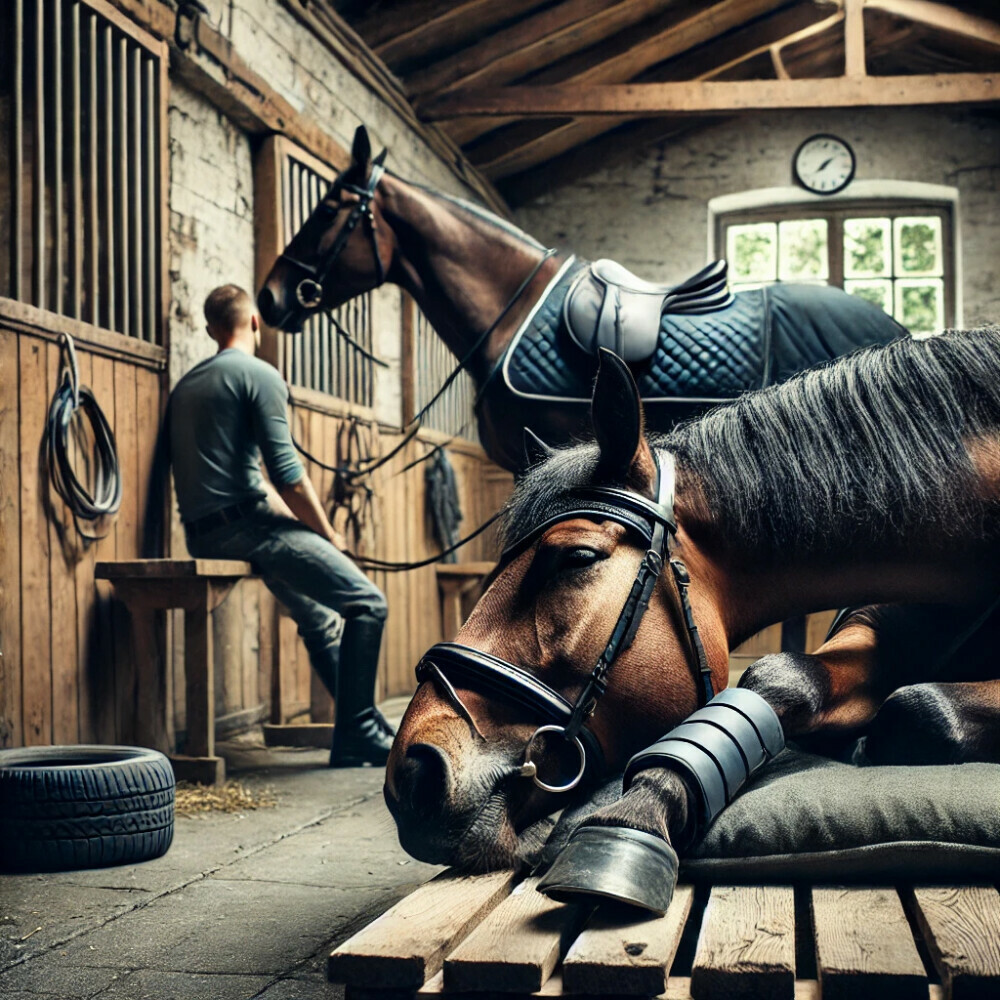Identifying Common Pitfalls in Horse Training

Horse training is a rewarding but complex endeavor, full of potential pitfalls that can impede progress. Understanding these challenges can help trainers and horse owners create more effective training programs and foster better relationships with their horses. Let’s explore some of the most common pitfalls in horse training and how to navigate them successfully.
Misjudging the Horse’s Temperament and Abilities
One of the most significant obstacles in horse training is misjudging a horse’s temperament and abilities. Each horse has a unique personality and skill level, and failing to recognize these can lead to inappropriate training methods. It’s crucial to spend time getting to know your horse, observing its behavior, and understanding its natural inclinations. By doing so, you can tailor your training approach to suit the horse’s individual needs, leading to a more harmonious and effective training experience.
Ignoring Early Signs of Stress or Discomfort
Horses, like people, show signs of stress or discomfort when things aren’t going well. Ignoring these signs can lead to bigger problems down the road, including resistance, fear, or even physical injury. Look for indicators such as pinned ears, tail swishing, and avoidance behaviors. Addressing these signs early on can prevent escalation and help maintain a positive training environment. Adjusting your techniques to make the horse more comfortable can lead to better outcomes and a more willing partner.
Overtraining and Lack of Rest

Overtraining is a common pitfall that can result in both physical and mental fatigue for the horse. Just like athletes, horses need time to rest and recover. A well-balanced training schedule that includes ample rest periods is essential. This prevents burnout and ensures the horse remains enthusiastic about training sessions. It’s important to listen to your horse and be flexible with your training plans, incorporating breaks and light days as needed.
Inconsistent Training Methods
Consistency is key in horse training. Inconsistent methods can confuse the horse and slow down progress. Make sure you use the same cues, rewards, and corrections each time you train. Consistency helps the horse understand what is expected and builds trust between the horse and trainer. If multiple people are involved in the horse’s training, ensure everyone is on the same page regarding methods and commands.
Failing to Adapt to the Horse’s Learning Style
Every horse learns differently, and a one-size-fits-all approach often doesn’t work. Some horses may respond better to positive reinforcement, while others may need more repetition and patience. Adapting your training style to fit the horse’s learning preferences can make a significant difference. Incorporating a variety of training methods, such as visual cues, physical guidance, and verbal commands, can help you find what works best for your horse.
Neglecting the Horse’s Physical Health

Physical health is a critical component of successful horse training. Neglecting a horse’s health can lead to injuries and long-term issues that impede training. Regular veterinary check-ups, proper nutrition, and adequate exercise are essential. Additionally, paying attention to the horse’s hooves, teeth, and overall condition can prevent many problems. Ensuring your horse is in peak physical condition allows it to perform better and respond more positively to training.
Lack of Clear Goals and Progress Monitoring
Without clear goals and regular progress monitoring, it’s easy to lose direction in horse training. Setting specific, achievable goals helps keep the training focused and provides a sense of accomplishment. Regularly reviewing progress and making adjustments as needed ensures the training remains effective and aligned with the overall objectives. Keeping a training journal or log can be a helpful tool in tracking the horse’s development and identifying areas that need improvement.
Miscommunication and Lack of Trust
Effective horse training is built on clear communication and trust. Miscommunication can lead to frustration for both the horse and the trainer. Using clear, consistent signals and body language helps the horse understand what is being asked. Building trust through positive interactions and patience is crucial. A horse that trusts its trainer is more likely to be cooperative and willing to learn.
Overlooking the Importance of Groundwork
Groundwork lays the foundation for all other training and is often overlooked. Basic exercises such as leading, lunging, and desensitization help establish control and communication from the ground up. These exercises build respect and trust, making subsequent training tasks easier to achieve. Skipping groundwork can lead to gaps in the horse’s training that may become apparent later on.
Failure to Seek Help When Needed

Pride or stubbornness can sometimes prevent trainers from seeking help when needed. If you encounter persistent problems or feel out of your depth, don’t hesitate to consult a professional. An experienced trainer can provide valuable insights and techniques that you might not have considered. Seeking help can save time and prevent frustration for both you and your horse.
Creating a Positive Training Environment
Creating a positive training environment is essential for success. This means being patient, consistent, and understanding with your horse. Celebrating small victories and maintaining a calm, encouraging demeanor can significantly impact the horse’s willingness to learn. Avoiding frustration and negative emotions helps keep the training sessions productive and enjoyable for both you and the horse.
By being aware of these common pitfalls and taking proactive steps to address them, you can create a more effective and enjoyable training experience for both you and your horse. Remember, patience, consistency, and understanding are the cornerstones of successful horse training.

